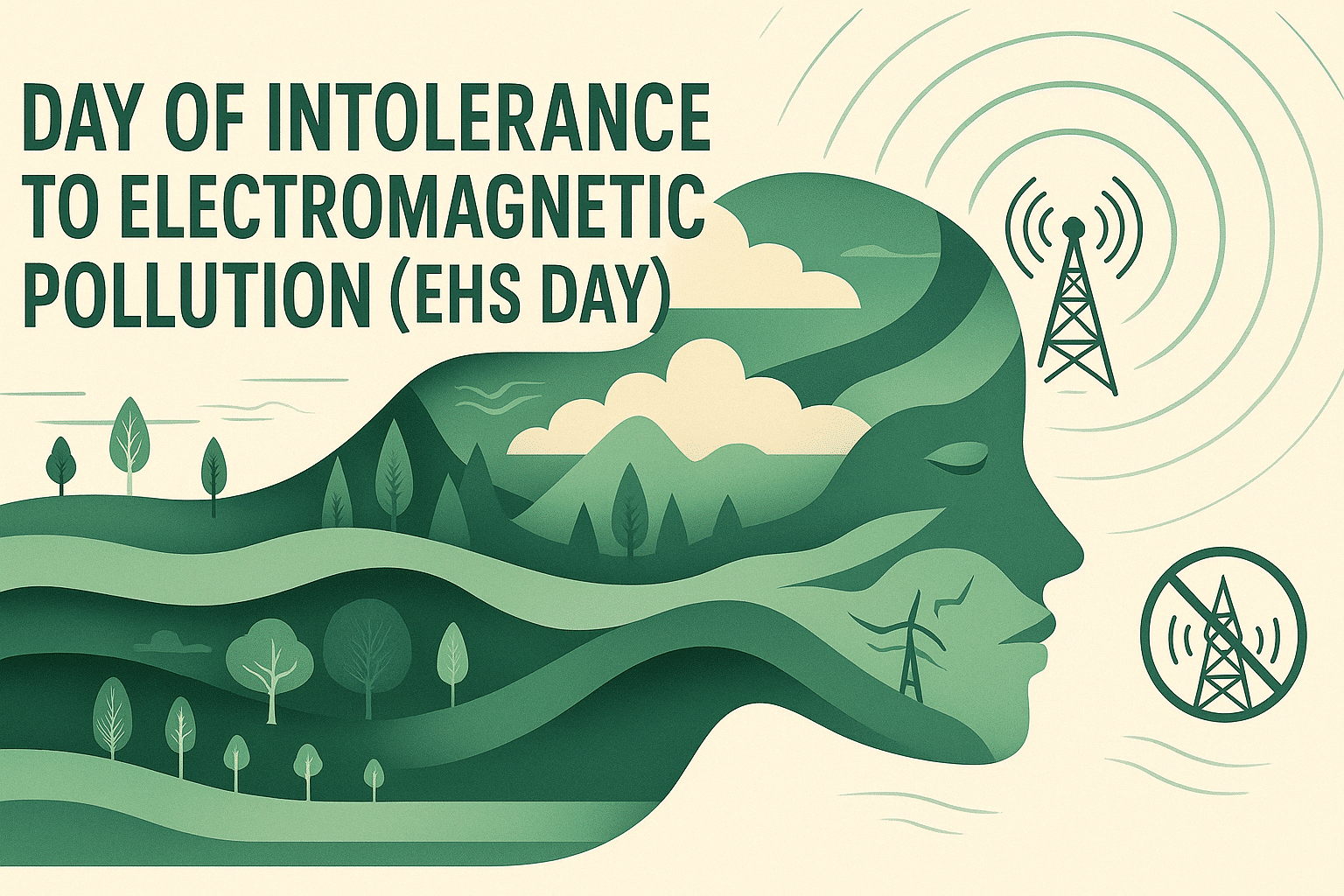What is the World Day of Intolerance to Electromagnetic Pollution?
The World Day of Intolerance to Electromagnetic Pollution is held globally each year on June 16. Also known as World Electromagnetic Hypersensitivity (EHS) Day, the observance brings attention to individuals who experience negative health effects from exposure to electromagnetic fields (EMFs). These EMFs come from common technologies like mobile phones, Wi-Fi, power lines, and smart meters.
The goal of the day is to raise awareness, promote research, and call for better protection and recognition for people living with EHS. It also challenges governments, health authorities, and industries to consider the invisible impacts of modern technology on human health.
History and Origin
World EHS Day was first observed on June 16, 2018. The initiative came from the French organization Cœurs d’EHS, which works to support people affected by electromagnetic sensitivity. The date was chosen as a symbolic moment to honor those who experience pain, fatigue, and other symptoms linked to electromagnetic pollution.
Since its creation, the day has grown into an international observance. Events include awareness campaigns, online forums, community gatherings, and digital-free activities. Activists and supporters use this day to push for environmental safety standards that account for the needs of electro-sensitive individuals.
Though scientific debate continues, many countries acknowledge EHS as a functional impairment, and several legal cases have recognized it as a health condition. The day provides a platform for those affected to be seen, heard, and supported.
Who participates in the World Day of Intolerance to Electromagnetic Pollution?
- Individuals with EHS: Share their personal experiences and advocate for recognition and support.
- Health professionals and researchers: Discuss the latest findings and health concerns related to EMFs.
- Advocacy groups: Campaign for policy change and safer environmental standards.
- Community organizers: Host events and create low-EMF spaces for connection.
- Concerned citizens: Learn about EHS and explore ways to reduce unnecessary exposure.
Slogans and Themes
Popular slogans include “Make the Invisible Visible,” “Technology Should Not Harm,” and “Recognize EHS.” The themes often focus on invisible disabilities, modern environmental health, and the right to safe living conditions.
Each year, the message encourages not just awareness, but change ; urging technology designers and lawmakers to factor in health and safety for all.
Colors, Symbols, and Patterns
Colors
- Gray: Represents invisibility and the unseen nature of EMF exposure.
- Green: Symbolizes healing, health, and a return to natural balance.
- White: Suggests clarity, peace, and clean spaces free of interference.
Symbols
- Shield icon: Indicates protection from EMFs and the right to a safe environment.
- Crossed-out Wi-Fi signal: Symbolizes digital-free zones or reduced exposure.
- Ear and wave icons: Represent sensitivity to signals and vibrations.
Patterns
- Radiating waves: Show how EMFs spread from common devices.
- Dotted grids: Represent networks and digital coverage.
- Concentric circles: Suggest ripple effects of exposure.
Most Used Hashtags
- #WorldEHSDay
- #EHSawareness
- #ElectromagneticPollution
- #EMFsensitivity
- #InvisibleIllness
How do you celebrate the World Day of Intolerance to Electromagnetic Pollution?
- Reduce exposure: Turn off Wi-Fi and mobile data to observe a digital detox.
- Join awareness events: Attend talks or community sessions on EHS.
- Create safe zones: Designate a room or space without wireless devices.
- Share experiences: Use social media or blogs to give voice to EHS challenges.
- Push for change: Contact officials to support safe standards in homes, schools, and workplaces.
Why is the World Day of Intolerance to Electromagnetic Pollution important?
In a world surrounded by wireless devices, it’s easy to forget that some people feel the effects physically. EHS is often misunderstood and dismissed, leaving sufferers isolated. This day calls for empathy, recognition, and action.
By reducing exposure and demanding safer technology design, we take steps toward a healthier, more inclusive society. The day gives visibility to an invisible condition ; and invites everyone to think critically about the relationship between convenience and wellbeing.
Features
June 16: Day of Intolerance to Electromagnetic Pollution (EHS Day)
Why do you keep falling for the same type?
Read the article Lovemaps: the hidden blueprint of our love.

